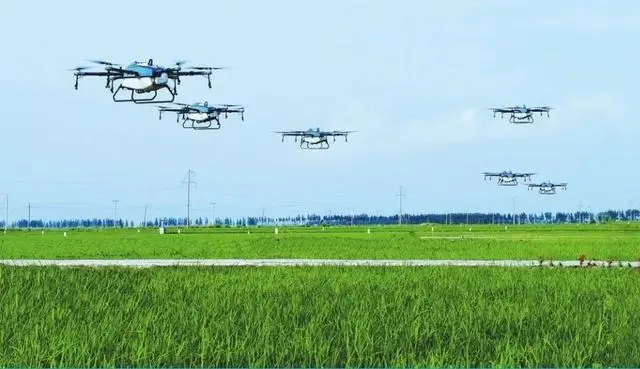Once upon a time, plant protection drones were still a niche product that could not be considered in the industry. Many people raised the question: “Is plant protection drones really useful, and how far can agricultural drones go?” In fact, plant protection drones are not only feasible, but also the trend.
In 2017, the United States had over 9000 agricultural aircraft, accounting for 28% of global ownership. It is understood that 50% of the land in the United States uses agricultural aviation technology, with airplanes undertaking 65% of chemical treatment operations and plant protection equipment completing nearly 60% of pesticide spraying work.
Japan, also an Asian country, was the first country in the world to use agricultural drones for spraying. At present, there are over 2000 registered agricultural plant protection drone enterprises, with a prevention and control area of 1 million hectares. Drone spraying accounts for over 50% of the total spraying area, making it the most mature country for drone application.
In China, the trend of agricultural planting towards scale and mechanization is slowly and continuously developing. It is undeniable that the degree of agricultural mechanization in China is still in a relatively early stage, especially in the field of aviation defense, where only 2.6% of the land uses agricultural aviation technology.
According to the third agricultural census data released by the Bureau of Statistics in 2017, there are 250 million people aged 36 to 54 engaged in agricultural production and operation in rural areas, and only over 60 million people under the age of 35. The aging and hollowing out of rural areas means that the remaining population needs to rely more on mechanical work.
At present, agricultural plant protection drones are not widely used in China’s agricultural industry. In 2020, the number of domestic plant protection drones exceeded 110000 units and the operating area exceeded 1 billion acres.
Currently, agricultural drones mainly rely on remote sensing drones and pesticide spraying drones. In terms of pest control and sterilization, drones are relatively efficient plant protection tools, which not only save time and effort, greatly improve work efficiency, but also reduce management costs. Especially for similar terraces, or some cash crop, or even fruit trees (using smoke preparation), although UAV plant protection is not perfect, it has certain irreplaceable advantages.
The application of drones in agriculture can also solve some bottleneck problems. For example, remote sensing drones can compensate for the low resolution and timeliness of satellite images; Plant protection drones can evenly spray pesticides, achieving spraying quality that cannot be achieved by manual or other spraying equipment, providing various application tools for agricultural production.
In fact, the application of drones in agriculture goes far beyond plant protection. There are also drone remote sensing monitoring methods, which use drone mounted multispectral cameras to remotely monitor the growth of crops. Remote sensing data is used to analyze whether crops are lacking in water, trace elements, outbreaks of diseases and pests, and so on. There is also the use of drones to draw topographic maps of fruit forest canopy, providing route planning for plant protection machines, and so on.
The application of drones will become increasingly widespread in the future, and will also have higher technological content. There is still a long way to go in the future to achieve the goal of scientific planting. If you would like to learn more about the details of plant protection drone flight and drone certification, you can inquire privately and provide free course materials and consultation.







Please sign in to comment
register